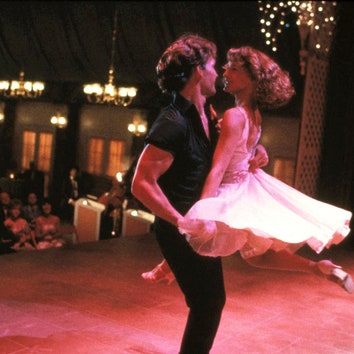How to make your own dance choreography
10 Tips From the Pros
Creating movement from scratch to encompass the feeling, rhythm, and theme of a song takes a little imagination and some work, whether you're a beginner or getting ready for a big performance. When you're including the movements and dance phrases for multiple performers, too, choreographing a dance can get quite complicated. That's why we're giving you some top pro tips on how to choreograph a dance when you're feeling stuck, including methods you can use to step outside the box and spice up your routine.
1. Study the Music
If you know what music you want to choreograph your dance to, start studying. Go beyond creating movements based on the rhythm and beat of the song, and study the lyrics, the emotion, and the meaning behind the song. You can find inspiration from the feelings you get when you read the words, and embrace the emotion the artist puts into the song.
Poppin' C, a Swiss popping dancer, says, "The music is everything for me, because the way my body adapts and moves, is because of the way I feel the music. " By knowing every part of your music inside and out, you can design dance moves that really work with the beat and lyrics.
B-boy Junior holds a breaking workshop at Red Bull BC One Camp in Mumbai
© Ali Bharmal / Red Bull Content Pool
2. Watch the Pros
Take some time to watch dance-heavy musicals, like "Chicago" and "Anything Goes," competitive series like "World of Dance," and even street performers, like Logistx, to grab some inspiration for your moves. Observe the styles, transitions, and combinations of movements and note how pro dancers create a physical connection to the music. This can help motivate you to create dances that get the audience to connect with your physical interpretations of the music.
3. Plan for Audience and Venue
Think about who your performance or event is for. Consider the venue you're performing at, too, because your dance environment can help you find ways to creatively express emotion. Lighting, sound, and the overall ambiance of your venue can help you design dances that incorporate mood and emotion to connect with the audience during your performance.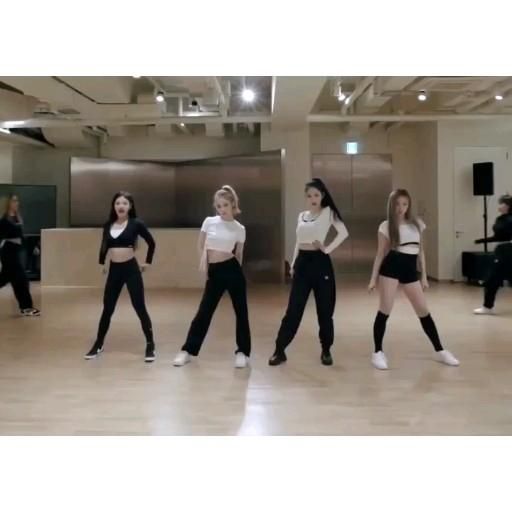
4. Think About Dance Style
Choreograph with steps and dance moves that reflect a specific style. You might try incorporating hip hop steps into a classical dance to mix it up and create your own unique dance style, for example. If you're just starting out with dance choreography, try focusing on learning how to balance a specific style of dance with your unique interpretation of the music you're dancing to.
Kid David poses for a portrait at Red Bull Dance Your Style USA Finals
© Carlo Cruz/Red Bull Content Pool
5. Focus on the Basic Elements
Focus on one (or several) of the most basic elements of dance: shape, form, space, time, and energy. For form, you can focus on designing phrases and steps based on a specific form from nature, like an animal or landform. Use your stage space to showcase explosive energy and give certain aspects of your performance a punch of emotion that keeps your audience engaged.
6. Don't Start at the Beginning
If you're stuck trying to figure out how to start your dance, plan it out from the middle or from the end.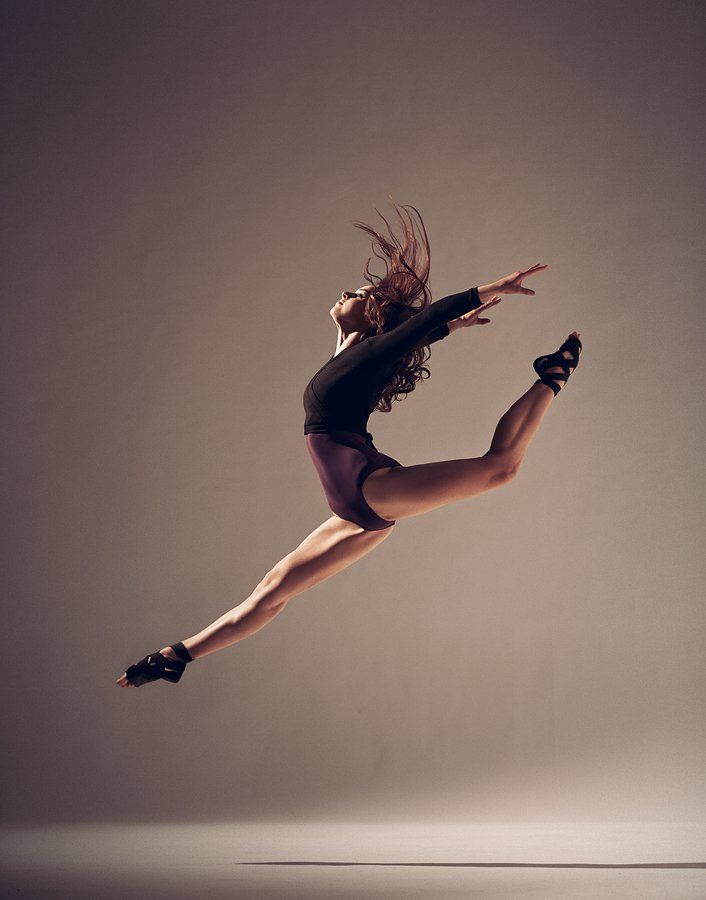 Tell a story through your dance choreography and plan out the climatic elements before the small steps to help you flesh out where you want to go with your ideas. Once you've outlined the basic structure of your choreography, piece it together into an entire work.
Tell a story through your dance choreography and plan out the climatic elements before the small steps to help you flesh out where you want to go with your ideas. Once you've outlined the basic structure of your choreography, piece it together into an entire work.
7. Try Choreographing Without Music
Dance in silence. It might seem like a crazy idea since you're choreographing the dance to a specific song. However, just letting your body move and flow with different tunes you imagine can help you step outside your comfort zone and incorporate challenging moves and dance steps that you might not have thought to pair with a song or score. When you discover something you like, pair it with other steps you've already developed and start fitting your moves to the music.
Poppin C shows off his moves during a photoshoot in Lausanne
© Torvioll Jashari / Red Bull Content Pool
8. Embrace Post-Modernism
Study early modern dance forms and styles that can get your imagination flowing.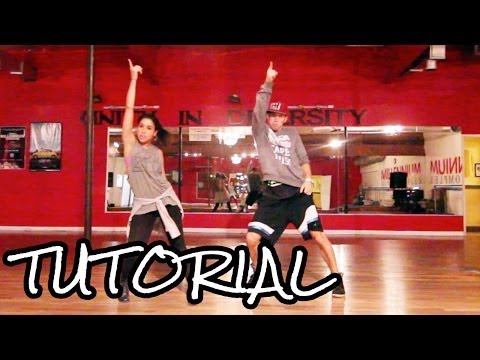 Dancers from the mid-century modern era through the 1950s and '60s (such as Anna Halprin, one of post-modern dance's pioneers) would incorporate a whole world of nontraditional moves in their choreography. Slow walking, vocals, and even common gestures can make imaginative additions to your overall work.
Dancers from the mid-century modern era through the 1950s and '60s (such as Anna Halprin, one of post-modern dance's pioneers) would incorporate a whole world of nontraditional moves in their choreography. Slow walking, vocals, and even common gestures can make imaginative additions to your overall work.
9. Incorporate the Classics
Use classical ballet, traditional ballroom steps, or other classic dance moves to mix up your style. It can be a startling transition for an audience to see a classical ballet step snapped in between freestyle phrases. Combining classical techniques with your dance design can add interest and suspense to your performances.
10. Use Other Art Forms as Inspiration
Don't just focus on music and dance. Look at all kinds of art forms, from two-dimensional paintings to live art performances. Take note of the different emotions and use of space, shapes, and forms that different artworks incorporate, and think about your interpretations and how you can convey that in movement.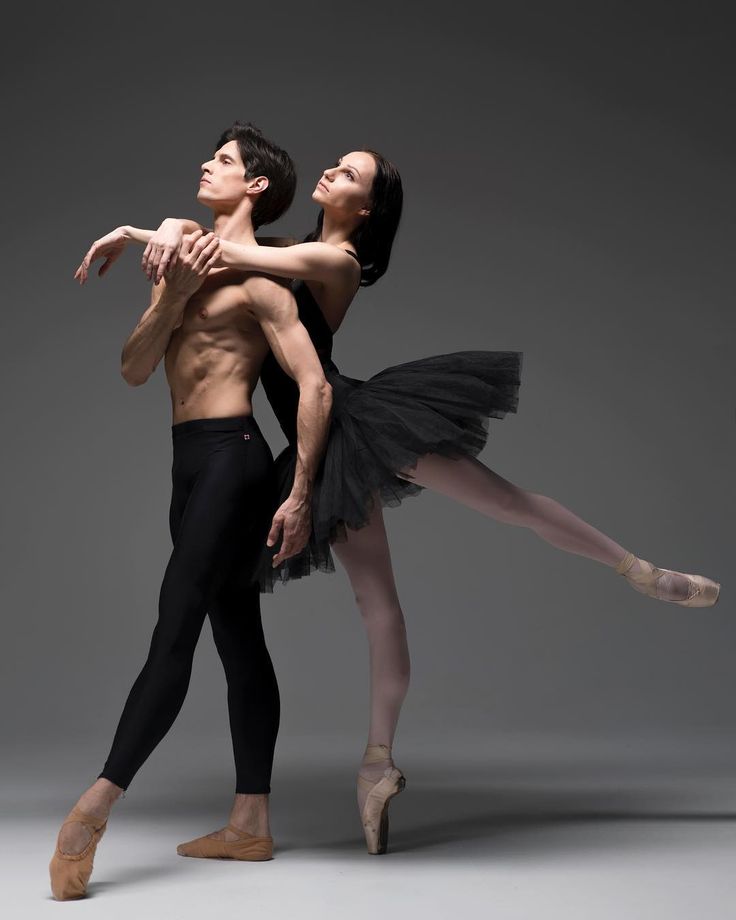 Use this as fuel for your inspiration when choreographing short phrases. Keep up to date on new forms of art to get inspired and avoid the dreaded writer's block (for dancers).
Use this as fuel for your inspiration when choreographing short phrases. Keep up to date on new forms of art to get inspired and avoid the dreaded writer's block (for dancers).
More Pro Tips to Choreograph a Dance
Arlene Phillips CBE, a British choreographer and theater director, got her start pro dancing and choreographing in the 1970s. She's been the choreographer for a variety of performances over the years, including live theater. Her advice for aspiring dancers includes some helpful choreographing tips:
Tell the music's story through your movements
Keep practicing with imaginative steps
Be determined to learn from your mistakes
Challenge yourself with unique rhythms, styles, and techniques
Plan out your most impactful elements then work in additional steps around those
Keep practicing your choreographing techniques
Don't be afraid to learn something new
One of the most important things to keep in mind when choreographing a dance, though, is to embrace diversity. Don't be afraid to do something different or outside the norm. Try incorporating new styles or steps to make your dance fresh, and study all types of art to get excited about your work. The more you challenge yourself to think outside the box, the more creative and unique you can be with your choreography.
Don't be afraid to do something different or outside the norm. Try incorporating new styles or steps to make your dance fresh, and study all types of art to get excited about your work. The more you challenge yourself to think outside the box, the more creative and unique you can be with your choreography.
15 Ideas To Help You Make Amazing Dance Choreography
There's no formula for making a supa hot fire piece, but there are dance choreography tips and tricks you can use to help make the process a lot smoother.
Here are some 15 choreography tips that'll help you make the best piece you can!
1. Focus on one sectionHone in on the section that you can see that perfect move or combo and branch out from there.
Or, break up the choreography into pieces (known as 'chunking') and just choreograph a little bit every day.
2. Budget your timeGive yourself a set schedule to choreograph – like a full week with two hour intervals.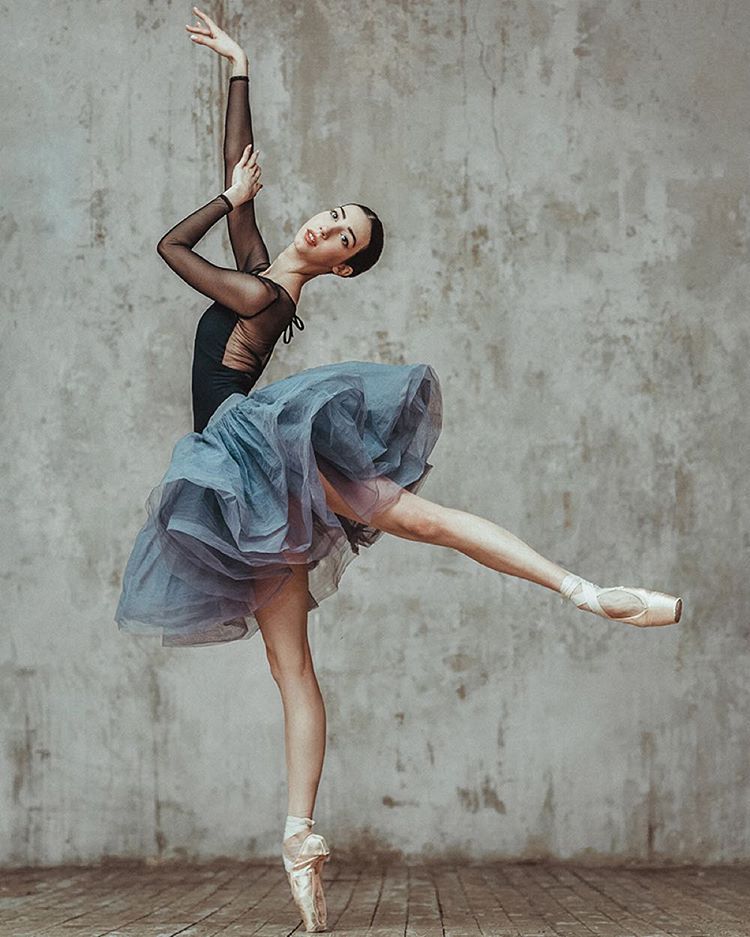
Don't just say "I'll choreograph later" every day and expect the piece to magically make itself.
3. Understand the music
Understand the song completely. The lyrics, meaning, beats, etc. I find myself stuck a lot when I would rush to choreograph to a song I barley listened to. But when I choreograph to a song that I connect with or know very well, my movements are more natural and carefree.
– Gina Hong
4. Do you
Be yourself! Don't focus on what's cool, but more on what feels good to you. The purpose of choreographing is to show your art and creativity.
– Devin Pornel
5. Collaborate with others
Working with other people to create a piece is one of my favorite things to do.You’ll be surprised by what you can learn from another person’s creative process.
– David Lee
6. Tell YOUR story
Don't choreograph to impress other people, do it to share a story. YOUR story.
– Tracy Seiler
7. Do weird moves
When you get stuck choreographing, try 'weird' moves- moves that make your body feel uncomfortable- or 'funny' moves- moves that help you get out of your head by just having fun with it. This allows your mind to create things that are new and creative. Keep changing up and that constant, somewhat dragging flow and you'll be surprised with what comes out of you.
– Michelle Shim
8. Be a character
What helps me most whenever I make a piece is I develop a character in my head. I give myself a reason, a motive, a feeling behind the piece.This will help you connect to the song and find some emotional attachment to your performance.
– Jaime Soriano
9. Trust yourself
Believe in your own abilities. Your very own, strictly organic, self-proclaimed abilities. A lot of us tend to have choreography blocks because we are investing too much time into what a piece should look like (based off of what we've seen from other choreographers), than what it should genuinely feel like.
– Mitch Villareal
10. Don't use videos as a reference
Watching videos is a great way to get inspired, but don’t just use them as a reference for moves.
Or else you'll just end up making a piece that's a patchwork of everyone else's choreo, rather than your own.
11. Dance to a different layer in the music
If you get stuck on the original pathway you were planning to follow, try highlighting a different layer in the music.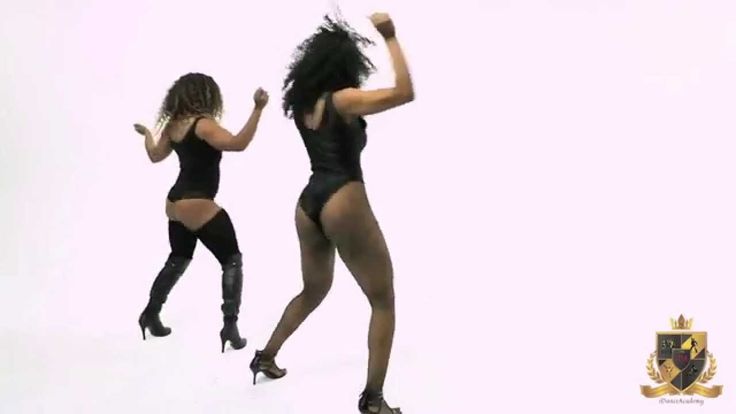
For example, forget the bass! What are the lyrics saying? How about the pitch?
Moving to different sounds will also help make your piece look more dynamic and less predictable.
12. Don't hit every single beat
Instead of moving to the most sounds, choose the right sounds. Be picky with the specific sound you want to follow.
You can groove through the rest or just have a moment in stillness, or milking the end of the last move.
Breathing through some sounds helps the audience (and your body) absorb a crazy sequence before or after that chill phase, and lifts some pressure off of the dance choreography process.
13. Utilize concepts to think of unique moves
Invent new moves based off of concepts. The potential for concept-based choreography is limitless, because your thoughts and ideas are limitless.
Just think of a word (or have someone give you one), and let that be your intention. You'll never run out of movement this way.
14. Take a break
Sometimes... the flow needs to pick up on its own. Instead of forcing it, take a break from your earphones and the mirror.
Do something else that'll refresh your mind and soul in a different way. Take a walk! Meditate! Watch a movie!
15. Watch this video when you hit choreo block
These 4 tips will help you get through that block!
We hope these dance choreography tips help! Can't wait to see the pieces you come up with.
Take class with your favorite choreographers to expand your vocabulary of movement and better understand how to piece moves together.
Sign up for STEEZY Studio and start learning!
profitability, work with teachers, promotion, difficulties and mistakes
Irina Malchukova
opened a dance studio twice
Author profile
Eight years ago I opened a dance studio in a small metallurgical town where there was nothing like it at that time.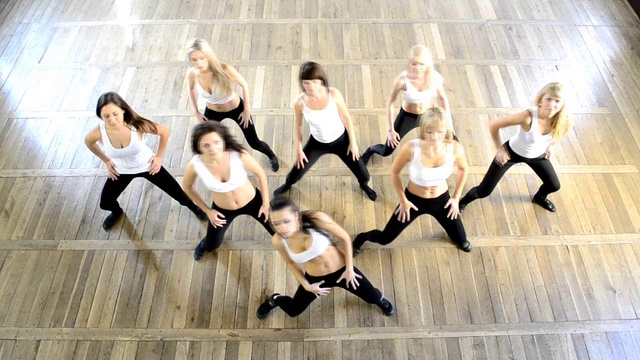
During its existence, the studio went through several relocations, twice seriously went into the red, but in the end it remained a successful business, and then I sold it. I’ll tell you how everything was, what worked for me and what didn’t work out.
Why I decided to open a dance studio
The story began in a standard way: since childhood, I dreamed of dancing and for a long time persuaded my parents to take me to a choreographic studio.
There were no holidays, vacations or birthdays in the studio. It was possible to miss a training session only in two cases, as the coaches joked: he fell ill or died. The rest of the reasons were not considered valid, and it was possible to fly out forever.
Later, I appreciated the strict discipline and exactingness of the teachers. Thanks to them, I can easily control myself, concentrate on any, even unpleasant, business, and bring everything to the end.
This helped a little in business: I could work 10-12 hours a day without days off and holidays.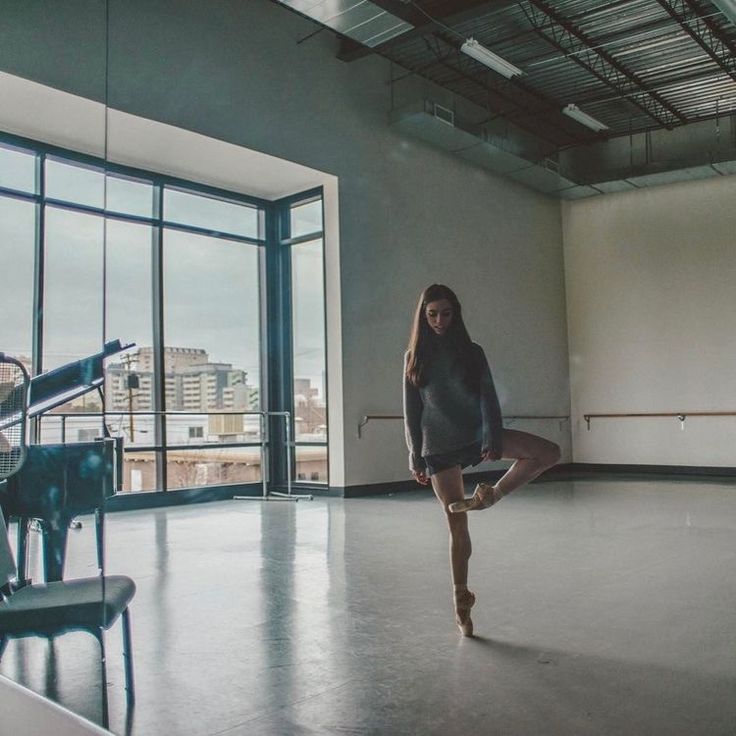
After graduating from school, I thought that dancing is a hopeless field, so I need to get a different education and build a career. I studied to be an economist and during my studies I managed to work in a trading company, a women's correctional colony and a large network company.
But I was bored doing monotonous activities and being subordinate to someone, I wanted to embody my ideas. In 2009In the year I decided to take a part-time job as a dance coach, and since then a completely different life has begun. I started working in the then popular areas: strip plastic, stretching, go-go, I also taught regular dances to children and was a group program coach in fitness rooms.
I enjoyed teaching people and putting numbers, inspiring others to accomplish things, raising students, and working with them to achieve results. It's like a coach's job: he gives his whole soul and nurtures champions.
Almost as soon as I started working as a trainer, I wanted to open my own studio.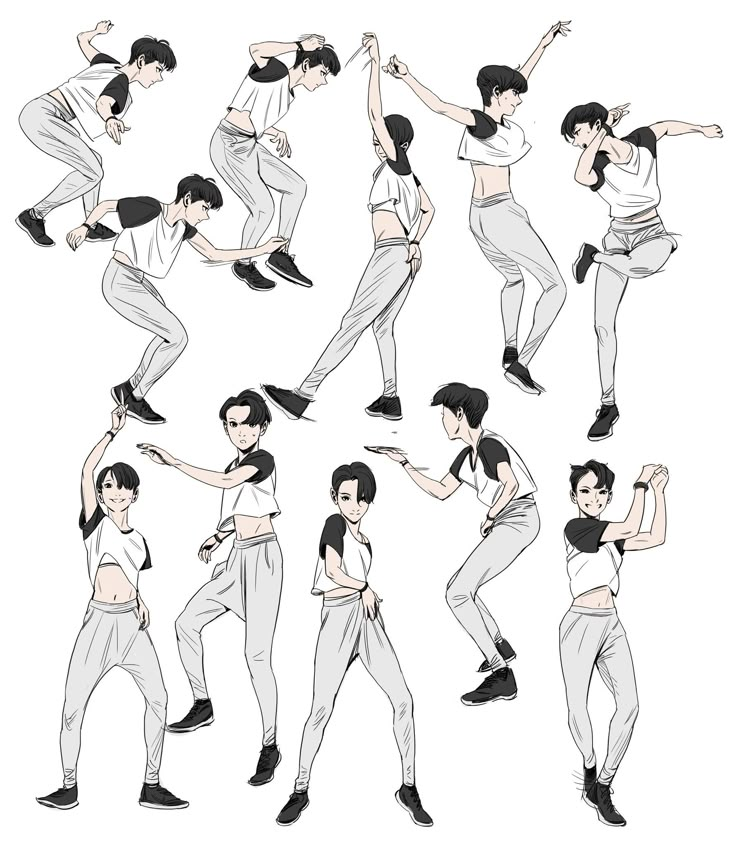 I didn't like the set boundaries and the backward approach to business. In the dance schools where I worked, there were outdated areas that were out of fashion for a long time, such as aerobics. Classes were held without requirements for students and without results: we did not put numbers and did not participate in contests or competitions. There were no opportunities for growth for teachers or students.
I didn't like the set boundaries and the backward approach to business. In the dance schools where I worked, there were outdated areas that were out of fashion for a long time, such as aerobics. Classes were held without requirements for students and without results: we did not put numbers and did not participate in contests or competitions. There were no opportunities for growth for teachers or students.
/twerk/
How to start twerking, how much does it cost and why shake your booty at all
The business itself was not service oriented. Schools did not develop, did not innovate - they simply worked for decades according to the old scheme. Several times I came with fresh ideas, for example, to shoot a video clip, but all this was perceived by the management with hostility.
In 2012, I graduated from the institute and received a diploma in economics. I had a choice: to leave for another city, because there were no prospects in mine, or to go work in the dance field abroad, or stay here, but do my own project.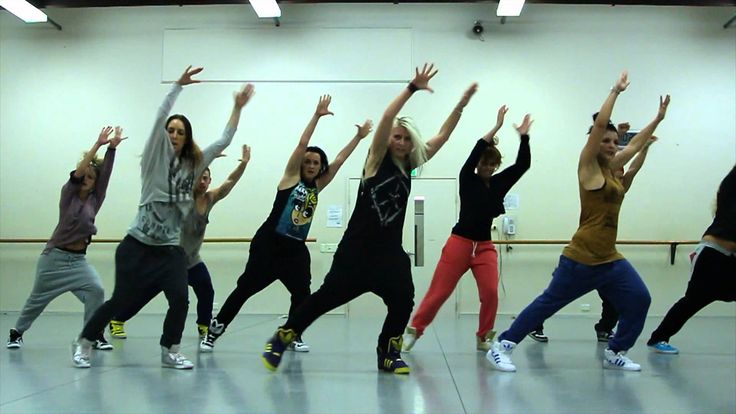
I dreamed of creating a project from scratch on my own: thinking about how to plan and conduct classes, presenting the design of the studio, tracking down the mistakes of others. All these thoughts were constantly spinning in my head, day after day I lived only with this idea, remembering what not to do or what could be improved.
After graduating from the institute, I myself learned about a new direction - half-dance, this is dancing with tricks on a pole. It seemed to me interesting and promising, there was nothing like it in our city. I decided that the idea would shoot and attract people due to its novelty. Three years after I started working as a trainer, I launched my own studio.
What is half-dance
Half-dance is close to strip plastic, but unlike it, the purpose of the dance is not to seduce, but to show acrobatic skills. The movements in strip dance are soft and smooth. And half-dance is the same gymnastics, only not on a beam or rings, but on a pylon. On it, dancers perform circus and power elements.
On it, dancers perform circus and power elements.
In my city, metallurgists were not even heard of such a direction, but in Russia and around the world in the 2010s, half-dance just became a trend. At that time, I already had a large client base from dance schools and fitness centers where I had worked before, many students asked when I would open my own gym.
Pupils perform elements of pole dance. The dancers practice in the most revealing clothing, because the only way to catch on the pole is with skin| Pole dance combines elements of choreography, gymnastics, acrobatics | There is also a separate sports direction in the world - pylon sport, which belongs to air power athletics |
Before I opened my studio, I twice studied pole dance in Yekaterinburg - this was the school closest to me where this direction was taught. And there lived a friend with whom I could stay.
The first time I went was in January 2012, and then back in May, before the opening of my gym.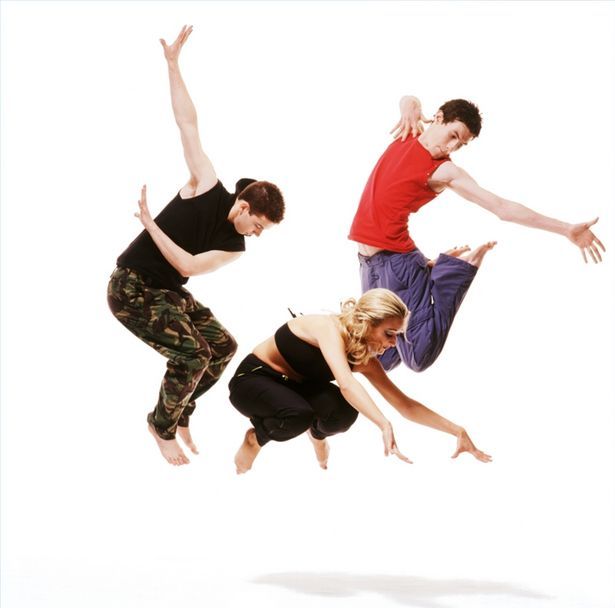 I studied for a week every day for many hours, attended master classes. For the first time, the director of the studio gave me a discount on acquaintance, and the training itself cost only about 10,000 R. The second time I spent about 17,000 R: the cost of the training itself increased, and there were more additional expenses for food and travel. Both times I received certificates.
I studied for a week every day for many hours, attended master classes. For the first time, the director of the studio gave me a discount on acquaintance, and the training itself cost only about 10,000 R. The second time I spent about 17,000 R: the cost of the training itself increased, and there were more additional expenses for food and travel. Both times I received certificates.
27,000 R
I spent on additional training in pole dance
There were no competitors in my city at that time. We had only seven dance studios: three taught street dances like hip-hop, breakdancing and locking, the rest were aimed at children, taught modern and classical choreography and ballroom dancing. In fitness clubs, they mainly taught go-go and oriental dances. I decided to take a risk and become the pioneer of a new direction in the city.
First Studio: 3m Ceilings and a Stolen Idea
In May 2012, I started looking for a space to launch the project just in time for the start of the school year. I discussed all the details like equipment, technical issues and the learning process with the directors of the studio in Yekaterinburg when I studied half-dance there.
I discussed all the details like equipment, technical issues and the learning process with the directors of the studio in Yekaterinburg when I studied half-dance there.
The room had its own requirements:
- Ceiling height - at least 3 meters, so that poles - pylons can be installed.
- The ceiling plate must not be hollow, but must be at least 30 centimeters thick. The pylons must withstand a weight of up to 150 kg. If the ceiling is thin, the mount simply won't hold up.
- Rent — up to 15,000 R per month. In my experience, it would be difficult to cover the amount higher with the number of subscriptions, and if something happens, I could find that kind of money to cover a failed month.
/dogovor-arendy/
What should a business consider when signing a lease
Not all landlords agreed to damage the ceiling, the thickness of the ceiling was not always suitable for my needs.
The deal failed with the first hall.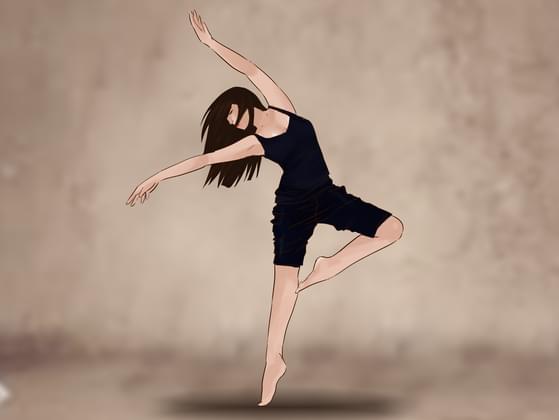 Due to the peculiarities of the ceiling, an additional structure had to be made there. The landlords agreed to do it themselves, and I would have paid for the work, but at first they doubled the price, then increased it even more, and then refused to cooperate at all.
Due to the peculiarities of the ceiling, an additional structure had to be made there. The landlords agreed to do it themselves, and I would have paid for the work, but at first they doubled the price, then increased it even more, and then refused to cooperate at all.
A few months later, I found out that they wanted to steal my idea and open a similar studio.
Fortunately, their attempt failed: they could not find the appropriate teachers, because only I had such a certificate and knowledge in the city. But the problem with the hall remained: I was already promoting a group on Vkontakte and recording for the academic year. The students were actively recruiting, but I had nowhere to receive them.
I couldn't just make excuses by telling a story about unscrupulous landlords and kept looking everywhere I could: on websites, in local newspapers, driving around the city, looking for signs about rent.
As a result, the opening had to be delayed for two months: due to the specifics and restrictions on the rental price, the premises had to be looked for for almost six months.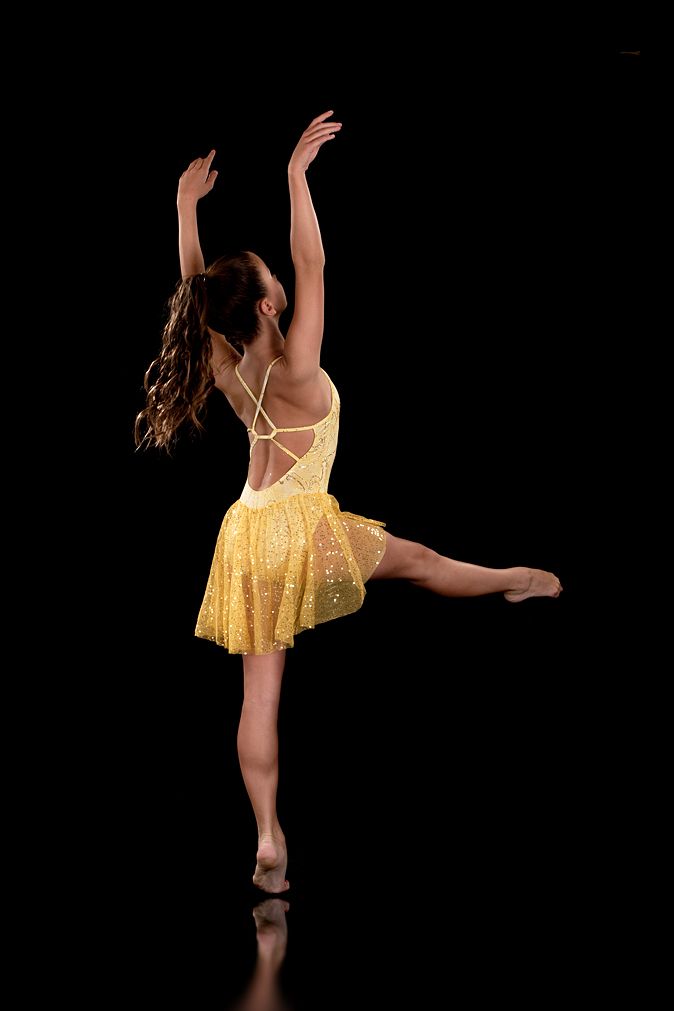 A former colleague helped: he learned from mutual friends that I was opening a studio, and his friend was just renting out a small hall.
A former colleague helped: he learned from mutual friends that I was opening a studio, and his friend was just renting out a small hall.
We have agreed that part of the repair costs will go towards rent. I did a facelift in a few days and bought equipment.
I did the repairs on my own — for example, I painted the walls myself. If it was necessary to attach pylons and arrange heavy furniture, then she called for help from familiar men. They spread linoleum on the floor and nailed it in places.
Pylons are installed quite quickly if there are no problems with the ceiling and floors: you need to drill a hole, attach the pylon, level it, and that's it. Detailed installation instructions are always attached to the pylons. We set up the first pylon in 2-3 hours, the rest were faster.
An important part of the cost for a dance studio is mirrors. They were made in a local company in my city to order. I ordered one-piece large mirrors to the floor. Due to the large size, there were difficulties with transportation: a special vehicle with equipment for transportation was needed - plastic windows are usually carried in such vehicles.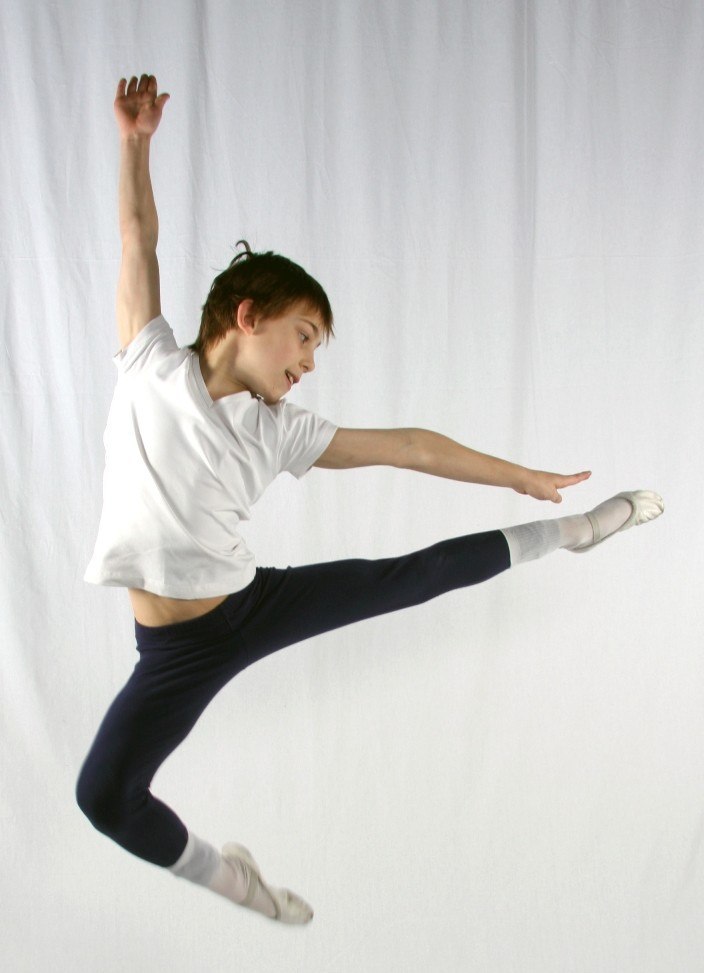
They could not be moved or installed by one person, and they could hardly fit into the aisle. Plus, there were difficulties with fixing: if the wall was not perfectly even, then any slightest deviation could be seen in the mirror - at the joints, in reflections.
But the mirrors themselves were excellent, and I then transported them to new studios, breaking the part along the way and ordering new ones. As a result, my friends came up with the idea of custom-made huge plastic frames, like for plastic windows, where we inserted mirrors. So they were easier to transport and install.
For a pylon, a hole is drilled in the ceiling slab and fixed with screws. If the ceiling is not strong enough, the pole may come off during the trick and cause serious injury. Source: Pole4you This is what the studio looked like after the repair - huge mirrors were made to order at the local production At the same time I registered an LLC, I was the sole founder. I chose LLC because I planned to open branches in other cities - it seemed to me that it would be easier to do this than with an individual entrepreneur.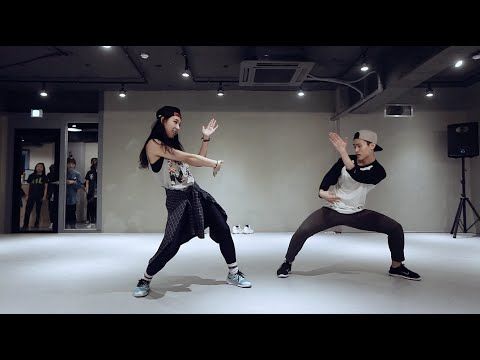
By the way, it would be better if I opened an IP. The LLC was not useful to me later, I had to close it, and this is more difficult than an individual entrepreneur. In the second hall, I had to negotiate with the landlord so that he would give me a legal address. He reluctantly agreed, and I had to pay for it. The LLC also needs to submit a large number of reports, but I did not have the necessary accounting knowledge. Until I hired an outsourced accountant, there were delays in submitting reports and fines.
/ooo-na-divane/
How to register an LLC from home
I opened the studio at the beginning of November. I was ashamed in front of the students, but they waited and almost all of them came.
To open a studio, I took out a loan, so after the opening, most of the proceeds went to payments to the bank - 20,000 R per month. For the entire time the business has been running, I have taken several loans, on average, 30,000-50,000 R for a period of 3 to 5 years. The total amount of all loans was 200,000 R.
The total amount of all loans was 200,000 R.
Expenses for opening a studio in 2012 — 200,000 R
| Equipment: mirrors, pylons, fixtures | 95 000 R |
| Cosmetic repairs: wall painting, flooring | 53 000 R |
| Training and advanced training before the opening of the studio | 27 000 R |
| Bathroom renovation | 14 000 R |
| Music center, locker room furniture, hangers at the entrance and other small items | 11 000 R |
Equipment: mirrors, pylons, mounts
95 000 R
Cosmetic repair: wall painting, floor covering
53 000 R
Training and advanced training before opening the studio
9000 000 RSanuzla repair
14,000 R
Music center, locker room furniture, hangers at the entrance and other trifles
11,000 R
How much did I earn
The first studio was small — there were only three pylons, and I could not teach more than an hour six or seven people.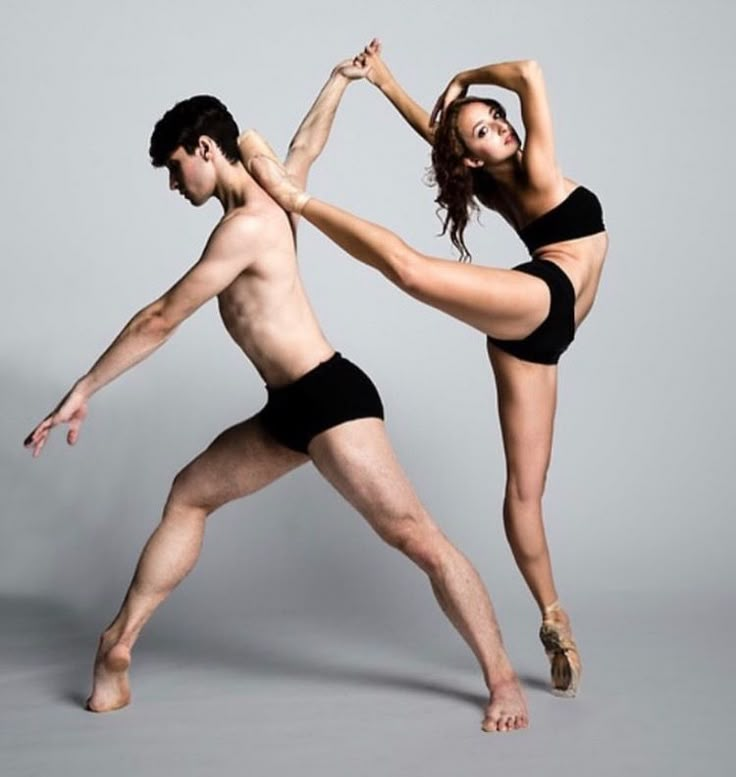 This allowed the studio to earn an income of about 65,000 R per month.
This allowed the studio to earn an income of about 65,000 R per month.
There were two main sources of income: group and personal lessons.
Group lessons were by subscription only. The most popular, for eight classes a month in the evening, cost 1800 R. Evening is considered the most profitable time, because more people come. There was a small discount for the daytime.
Personal lessons were by subscription and one-time. A subscription for eight classes cost 3000 R, a one-time visit - 500 R. At first, the income from personal classes was small: with group classes, I did not have time to take more students. When more teachers appeared, I could only go to personal classes, and the revenue from them reached 30,000 R per month.
A regular waste was the purchase of alcohol: it is rubbed on the surface of the pole to remove dirt and sweat and improve adhesion to the skin. Alcohol had to be bought in canisters from doctors I knew - we needed a concentration of at least 70%, and this is not for sale in the public domain.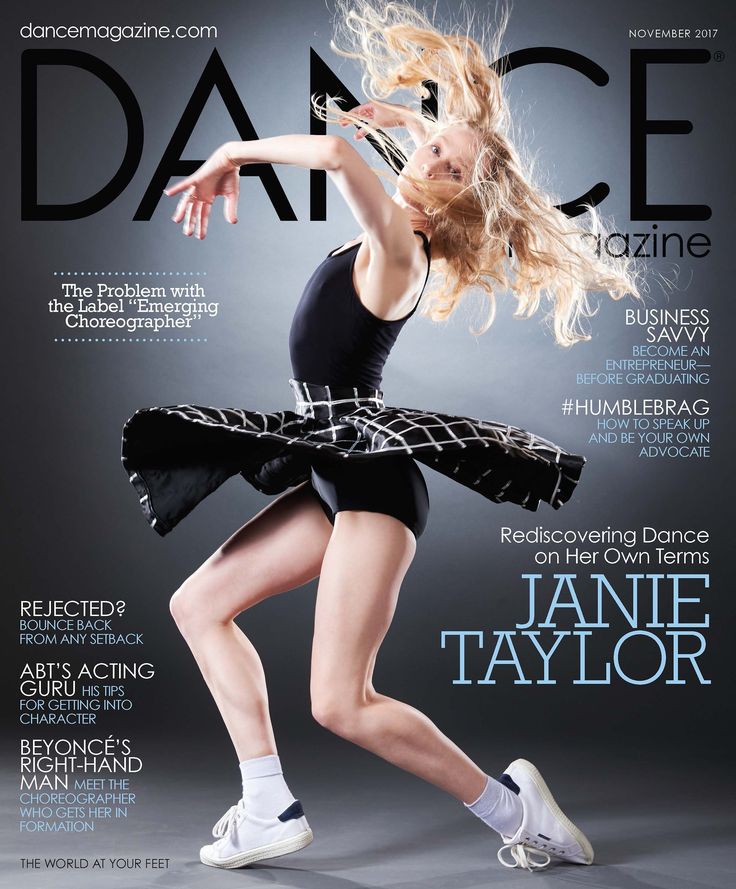 It took 2000 R per month.
It took 2000 R per month.
The largest turnover was from the spring of 2013 to the spring of 2014: 140,000-170,000 rubles. And the largest net profit was about 60,000 rubles.
Revenue for December 2012
| Subscription for 8 lessons | 27 000 R |
| Subscription for 12 lessons | 12 500 R |
| Subscription for 16 lessons | 12 000 R |
| Day group | 8000 R |
| Personal lessons | 5000 R |
| Total | 64 500 Р |
Subscription for 8 lessons
27 000 R
Subscription for 12 classes
12 500 R
Subscription for 16 classes
12 000 R
Day group
8000 8000 °
Personal classes
9000 5000 5000 °64 500 500 500 500 500 500 500 500 500 500 500 500 500 500 500 500 500 500 500 500 500 500 500 500 500 500 P
Studio expansion: moved four times in five years
The studio lasted only six months in the first building: the landlord changed plans and we had to move out.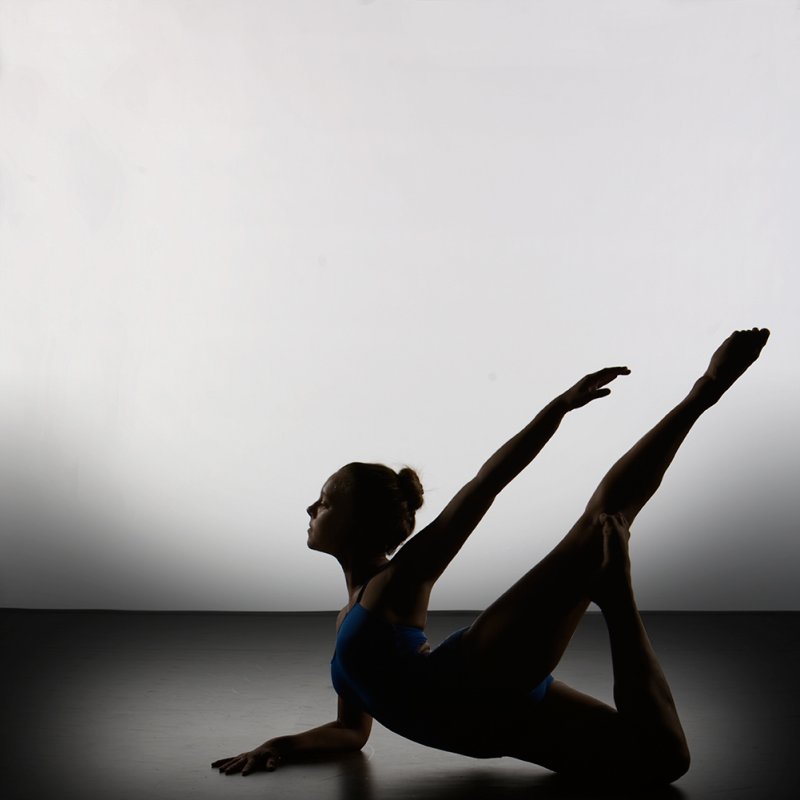
I already wanted to move out myself, because the room was small and I could not teach more than seven people in an hour. To support myself, support the studio and repay the loan, I needed to sell 20-30 subscriptions a month. If I bought less, I no longer had enough money for all expenses. It was necessary to expand and increase income, and for this, another room was needed. In just five years, we moved four times - each time to a new area of the city.
In March 2013, I took away the mats and the music center and moved to another room - almost three times bigger than the old one. I had to take out a loan again, because the old pylons did not fit in height. For 150,000 R I bought five new pylons and changed the flooring. The move cost 300,000 R, including rent for two months.
300,000 R
I spent on moving
There were no problems with buying poles: even then in Russia there were several specialized companies that produced professional poles for dance studios. The best and most famous is located in St. Petersburg - Pole4You. You place an order on the website, choose a convenient delivery method - I had "Business Lines" - and they send it. Two weeks later I received the pylons.
The best and most famous is located in St. Petersburg - Pole4You. You place an order on the website, choose a convenient delivery method - I had "Business Lines" - and they send it. Two weeks later I received the pylons.
| Lesson in the second hall after renovation. The floor had to be re-laid - it should be soft high-quality linoleum so that the students do not hit their knees and do not get hurt when they fall | This is the third hall we have moved to. There I seriously invested in repairs, laid carpet on the floor, repaired the locker room and shower for students and teachers |
 In the third hall, they made a bright panel on the wall. I was the first in the city to start teaching half-dance, so this particular dance is depicted on the panel
In the third hall, they made a bright panel on the wall. I was the first in the city to start teaching half-dance, so this particular dance is depicted on the panel The rent of the premises was three times higher than the previous one, the communal apartment was included in the price. In addition, you had to pay for security. All together it cost me 50,000 rubles.
There were no cheap premises, so the choice was either to continue or give up the dream. I decided to take a risk, and the risk was justified: the business grew rapidly. After the move, we already taught 10-12 students per hour and earned an average of 150,000 R per month.
How I built my work with teachers
I recruited teachers from former students: I chose those who had the potential for this or that direction, loved classes and knew how to communicate with the team. There were three main teachers, I took one or two more for additional directions like go-go.
She tried to make the work of teachers a pleasure: she gave salaries higher than the market, bonuses, paid for their education and advanced training, gave part-time jobs.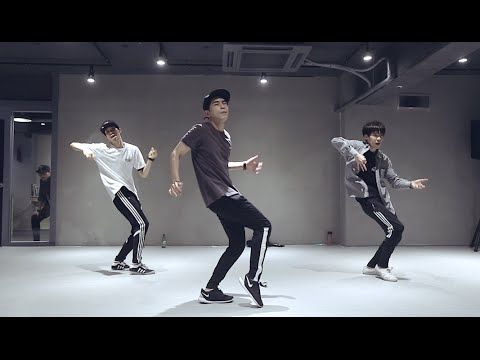 The average salary in the city for teachers at that time was 2500-4000 R per month for 2-3 lessons per week. I paid 7000-8500 R, if I gave out a bonus, then it came out about 10,000-11,000 R. I gave out bonuses to those who attracted new students to their classes and, most importantly, kept new students. Or those who came up with something interesting like New Year's contests.
The average salary in the city for teachers at that time was 2500-4000 R per month for 2-3 lessons per week. I paid 7000-8500 R, if I gave out a bonus, then it came out about 10,000-11,000 R. I gave out bonuses to those who attracted new students to their classes and, most importantly, kept new students. Or those who came up with something interesting like New Year's contests.
Teachers went to Yekaterinburg to improve their qualifications. It cost me 500-3000 R per person. I myself taught until the fall of 2013, and then I decided to leave only to manage the studio, since classes took time and effort.
Promotion: mostly word of mouth worked
The very first I had a group in VKontakte — I started to recruit the first students even before the opening of the studio from former students. When I started to develop the group, I asked my friends to join it and make reposts, every day I posted posts, photos and videos to attract people. About a year later, the group had 1000 subscribers, and since 2013 it began to develop actively.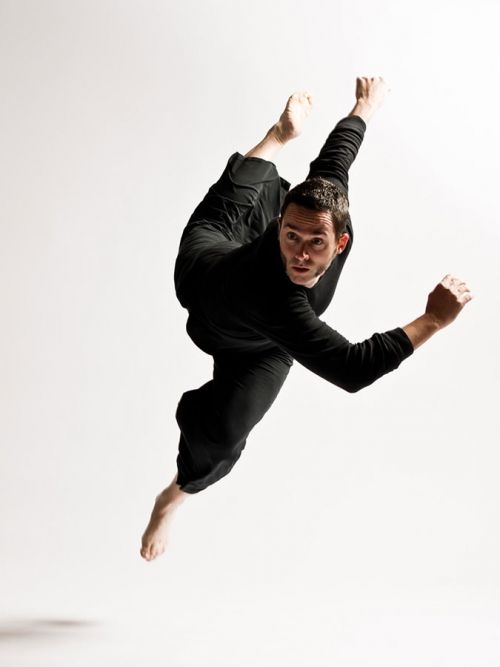
The popularity of the project was also influenced by the uniqueness of the project: half-dance in the city was a new exotic direction, people from the media sphere became interested in this.
/marketing-ads/
Basics of marketing for business: advertising
My main clients were girls 25-35 years old with an average income and a little higher.
Here's what I used to promote.
Regularly updated accounts on Vkontakte and Instagram. I photographed a large, beautiful, spacious hall with high pylons, people reacted and signed up for classes. We wrote about the studio every day, posted posts, asked all our acquaintances and friends to tell about us.
Involved in the promotion of the community of teachers. In the new premises, I already taught with three coaches, whom I found among former students. They posted recruitment announcements for groups on their social networks, made photo sets and videos for Instagram.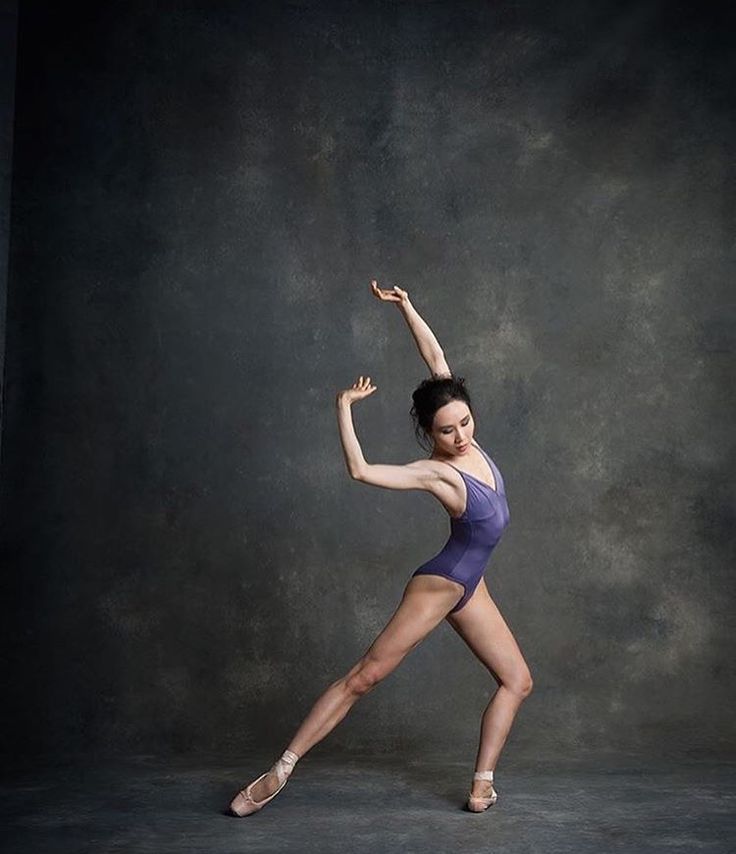 Friends of acquaintances came - it turned out such a word of mouth.
Friends of acquaintances came - it turned out such a word of mouth.
Made a website for the studio. It cost about 13,000 R. I made a beautiful clip on the main page, added photos, information about teachers and a class schedule. After the site appeared, calls began to arrive twice as many.
13,000 R
I spent on the site
I invited photographers and cameramen to work on a barter basis. The direction was new in the city, so they were interested in working with us free of charge. Sometimes they did provocative reports like "Half-dance: striptease or art?", but in any case, publications brought us fame. There were about 15 permanent photographers.
Photos from the performances of studio teachers at concerts and events. These are dances on canvases. Photo: Dmitry Kaiser| An example of a photo shoot that we came up with with a photographer. Photo: Dmitry Kaiser | For them, it was new and unique content that no one else had done in the city.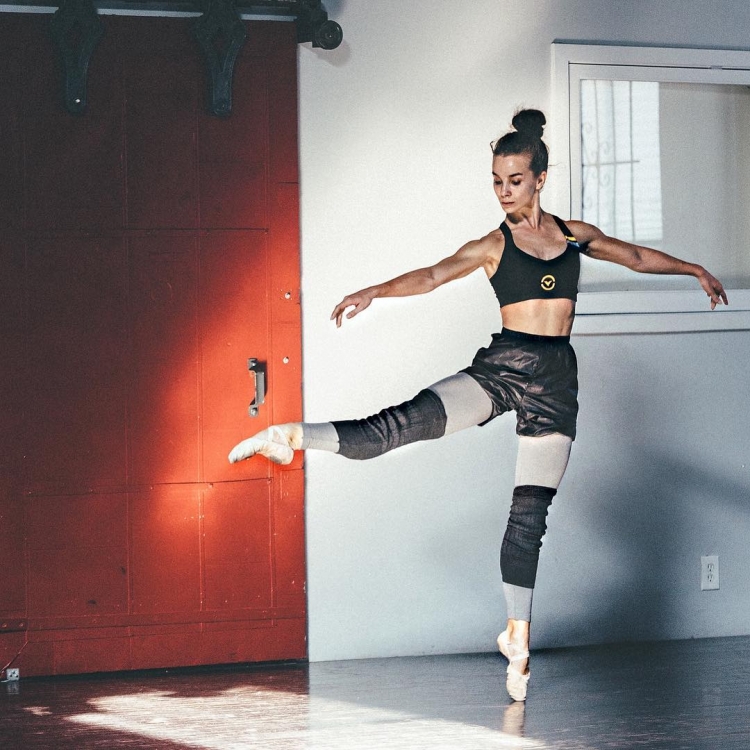 Photo: Dmitry Kaiser Photo: Dmitry Kaiser |
Placed ads about the studio. I have published on local sites, 2GIS, Flampe and Avito. She advertised several times through Yandex Direct. Local sites and 2GIS did not give any results, but promotion through Yandex Direct and Google Ads worked.
I was engaged in promotion, at the very beginning I asked a friend to figure it out and help set up advertising. Usually, new campaigns were launched before the season - at the end of summer to attract students for the new school year, and at the end of winter to attract people for the spring. The advertisement lasted 1-2 weeks, the average budget per campaign was 7000-15000 rubles. We did not have to negotiate with them: they themselves found out that a new dance style was being taught in the city, and they wanted to talk about it.
Development of the studio: new directions in the city
Everything was spinning at breakneck speed. Soon I brought new dance styles to the city: aerial gymnastics on canvases and acrobatics on the ring. This trend had already begun in Yekaterinburg, and I knew that it would soon come to our city. It was necessary to have time to be the first.
At first, all this was not in demand, because it was hard and difficult for the students. It is very painful to practice on the ring and canvases: after the lesson there are huge bruises from hoops and burns from the fabric.
Imagine: you are hanging in the air and you are being held by a rag digging into your body.
But then the direction unfolded: beautiful photosets and clips with dances on canvas appeared in all social networks, competitions began to be held in cities, dance studios made enticing advertisements.
I was the first to develop this direction in the city, so the students immediately came to me. Once I organized a competition to draw attention to dancing on canvases: for the best photo on canvases, I gave a subscription to eight classes in the studio.
From the outside, these dances seem dangerous, but there have never been any accidents in my classes. Classes are necessarily held with special mats that soften the blows if someone suddenly falls. Teachers are trained and know how to avoid injuries. Before the start of classes, my clients got acquainted with the instructions for safety rules and signed it. Nevertheless, adults understood their responsibility, no one took risks once again.
For classes on canvases and rings, you need to buy additional anchors - these are such fixtures in the ceiling - and soft mats on the floor for safety In general, there are few incidents in this area. I heard only about one case: in Yekaterinburg, a girl flew off a pylon and broke her arm. But it was a pylon of a different design - a portable one that stands on the podium. It is less stable than a pylon bolted to the floor and ceiling in a studio.
I heard only about one case: in Yekaterinburg, a girl flew off a pylon and broke her arm. But it was a pylon of a different design - a portable one that stands on the podium. It is less stable than a pylon bolted to the floor and ceiling in a studio.
I first looked for teachers at the local circus school, we have a pretty strong one. But we worked with them for a couple of months and did not agree, so I sent several students to study in Yekaterinburg at my own expense - so that they could conduct classes.
44,000 R
I spent on the introduction of a new direction
The introduction of new directions cost 44,000 R: 38,000 R was spent on canvases, anchors and rings, another 6,000 R were spent on teaching teachers.
Children's dance school and missed grant
My students and parents of former students regularly asked to open dance classes for children: variety dances, stretching, modern choreography.
This would help expand the business and reach a different part of the audience. I knew for sure that the project would be successful: I had already worked as a choreographer with children aged 6-7, I had a reputation and potential clients.
I knew for sure that the project would be successful: I had already worked as a choreographer with children aged 6-7, I had a reputation and potential clients.
There was no free money to create a children's school, so I decided to look for a grant and found a suitable one - the competition of the Entrepreneurship Fund. To participate in it, one had to take courses and defend a business plan.
I did not learn anything new during the courses, since I already had an economic education. The next step was to write a business plan and submit an application. I asked for money not just for a children's school, but for business development.
I collected a package of documents: statutory documents, certificates of no debts to government agencies, a certificate of completion of courses, several questionnaires from the foundation itself, a business plan and checks confirming the costs of the project - 15% of the requested amount.
300,000 R
I got to the children's dance school
As a result, I won the competition and received 300,000 R.
Everything went well, but again there were difficulties with the premises. I needed a hall with an area of 50 m², and these cost 50,000-100,000 R, and not in the center, but on the outskirts of the city. I couldn’t take on such obligations and pay more than 100,000 R for the premises of an adult and children’s studio: I had loans, and if something went wrong, no one would help me.
I tried to search for premises through state auctions and the city administration, I turned to the mayor for help. She offered to do free classes for children from orphanages or large families. But no one came towards me. We have a small city, culture and education are not particularly developed here.
There are factory workers in my city who prefer to drink and watch TV after work.
It was not accepted to get involved in something or have a hobby, so it is difficult to develop in a creative environment.
As a result, the school could not be opened.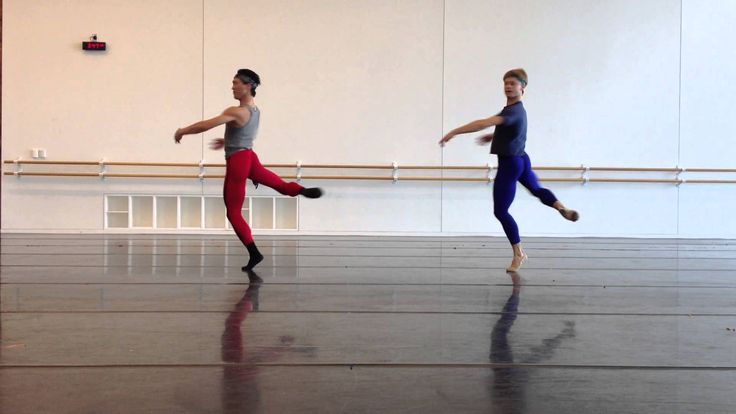 I spent a grant on an existing studio, and the foundation accepted it, because I originally asked for money to expand and develop the business. So the grant was well spent.
I spent a grant on an existing studio, and the foundation accepted it, because I originally asked for money to expand and develop the business. So the grant was well spent.
Despite the history with the grant, 2014 was a successful year: for the first time we held the first major dance event in the city — a pole dance competition. At the same time, it became possible to open branches in other cities: I found two halls and a representative, and I could launch three schools at once. But she was afraid of responsibility and put it off for the future.
/pozhaluite-grant/
How I got a grant for 100,000 R
I was afraid to carry such a large financial burden on my own, especially the simultaneous payments for four rents. I also wouldn’t have had enough time to manage all the studios myself, and there was no one to delegate.
If I created a network of dance studios, it would raise the status of the project, bring in additional income and allow the sale of the franchise to start. In the future, I did not have such opportunities.
In the future, I did not have such opportunities.
Went into the red and started again from scratch
In the winter of 2014, things went badly. At first I thought that it was just the off-season, winter and summer in this area are disastrous months. I had a small airbag with which I closed the holes. But in the spring it ended, but the situation did not get better, and the business went into the red.
Just then, the financial crisis happened, and it hit my city significantly: salaries dropped a lot, people began to save money - and first of all on hobbies. The city has a poor population, business is not doing very well, and financial shocks have a strong impact.
It seems to me that my business went into the red mainly due to two reasons:
- Some of the teachers turned out to be unscrupulous - they conducted additional classes in the studio past the cash desk. Or they were trained at my expense, and then left and poached students.
 I noticed this just in the fall of 2013 and in the winter of 2014, I was losing 20,000-35,000 rubles a month because of this.
I noticed this just in the fall of 2013 and in the winter of 2014, I was losing 20,000-35,000 rubles a month because of this. - Clients asked to extend their subscriptions in advance, but never brought money. In the winter of 2014, there were a lot of such cases - about 9— 12 people per month.
As a result, the studio's income fell from 110,000 to 60,000 rubles. I was forced to fire unscrupulous teachers and could no longer pay rent.
I had to move from a good place to nowhere, and the studio stopped working for almost a year - until February 2015.
Despite the closure, I believed in my project and had no idea what else to do. At that moment, the studio seemed to be the work of my whole life. In January 2015, I saw an advertisement for the delivery of a building with four-meter ceilings and two large halls.
By that time, competitors had already begun to appear in the city, who also taught half-dance. Half of my students and all the staff went to them - this time no one expressed loyalty and did not wait for me to solve problems. But the description of the new premises hooked me, and I decided to open again. She recruited teachers from her former students, and also looked for clients through social networks.
But the description of the new premises hooked me, and I decided to open again. She recruited teachers from her former students, and also looked for clients through social networks.
The repair of the hall took several months, so the studio opened only at the end of March. With difficulty, but I brought the business to its previous level, launched joint courses with teachers from other cities. I spent 285,000 R on the opening - these are the costs of repairs and rent for three months. I borrowed part of the amount from a friend, I earned part myself - at night I wrote diplomas in economics for students.
285,000 R
I spent on opening a new studio
How I decided to sell the studio two months. I managed to pay off debts for repairs and reach a stable profit.
In 2016, a lot has changed in my life. I met my future husband, we began to live together, and then we decided to move to another city. The business was irrelevant for me, and I put the studio up for sale.
It was planned that it would be bought by one of the old students who have been in the studio since its foundation. And so it happened. We negotiated with one of the students for almost a month. By that time, I had already closed my LLC and was about to move. Therefore, I sold the studio to her as an individual with the transfer of all rights, property and equipment for a symbolic 100,000 R - this is how much the equipment of the hall cost, taking into account wear and tear.
After the sale, I introduced the new owner of the studio to the staff and students, completed all personal affairs and never returned to this topic.
Expenses for December 2016
| Salary | 25 000 R |
| Premises for rent | 14 000 R |
| Drinking water and disposable cups | 2000 R |
| Alcohol | 2000 R |
| Utility payments | 1500 R |
| Total | 42 500 Р |
Salary
25 000 R
Renage Р
What mistakes affected the development of the business
Despite the successful start of 2014, I made mistakes that slowed down the development of the business.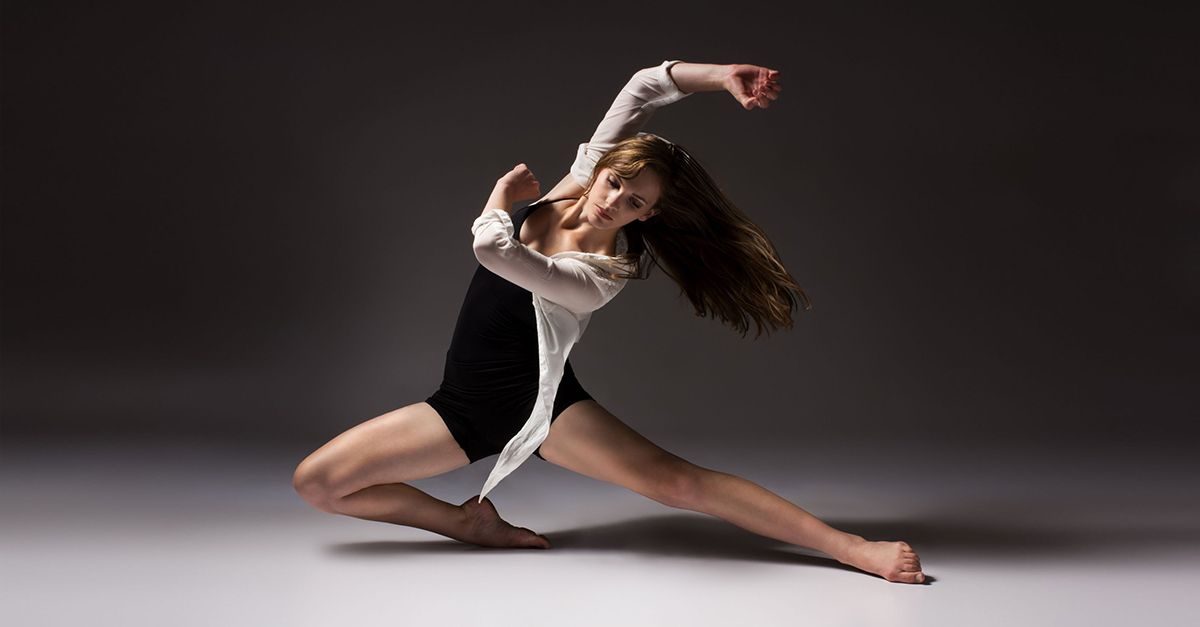
Did not conclude contracts with teachers, because I relied on their integrity and honesty. As a result, they went through training that I paid for, then went to competitors and took students away. To prevent this from happening, I needed to legally fix the training and confidentiality conditions. For example, to prescribe in the contract that the teacher is obliged to work in the studio for a certain period after completing the training or pay its cost, otherwise - a fine.
Gave the keys to the studio to all teachers. I didn't follow what the teachers were doing in the studio outside of class, and someone began to conduct classes past the cash register. Usually, an administrator works in studios, and only he has the keys: he opens and closes the studio, marks clients, and monitors subscriptions.
Made the salary too high in the city. I could save about 15,000 R per month on teachers' salaries and spend this amount more appropriately - on advertising or attracting additional teachers during the daytime and weekends.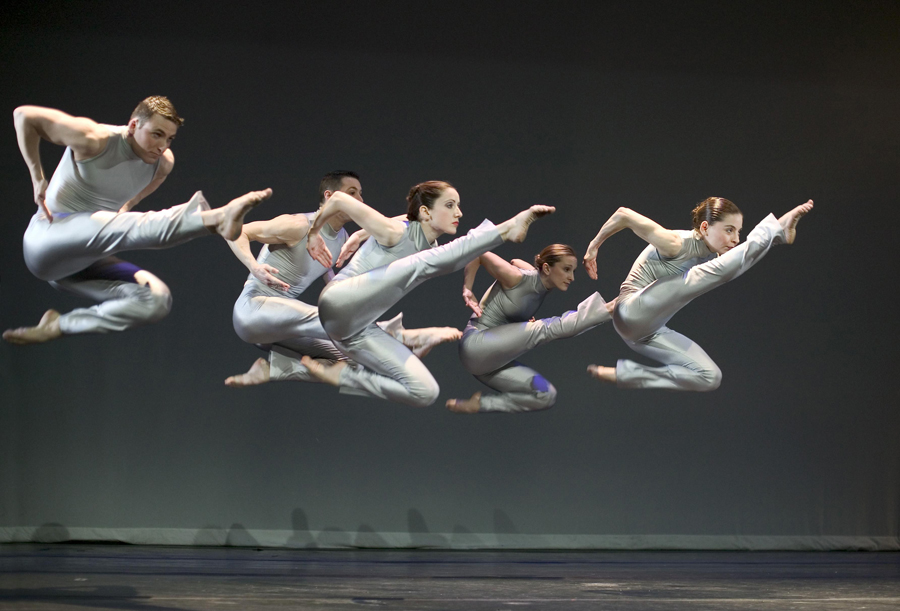
Didn't introduce strict visiting rules and didn't set up an accounting system. I went forward when the students asked to renew the subscription on credit or pay in installments. Because of this, I lost some of the money: clients went to classes, but never brought money for them, and I could forget who did not pay. If we had a CRM or other customer accounting system, these problems could have been avoided.
Irrationally used the premises. Instead of opening a second hall and teaching other dance styles, I made a dressing room and an office for employees in its place. In addition, it was possible to sublease the premises in the morning and afternoon, when there were no classes. I was offered this, but I refused. The studio could have a large sum from the evening for the sale of subscriptions, so you would have to keep track of those who rent the hall for sublease - either hire an administrator or do everything yourself. There was no worker for a nominal fee, and I didn’t have enough time.
Did not use all advertising tools . It was possible to attract well-known personalities in the city for cooperation, place booklets and business cards in popular places, launch targeted advertising and more actively maintain a page on Instagram. When I reopened the studio, I no longer invited the press and did not arrange master classes, and as a result, they began to forget about the school, especially since three competitors appeared.
Made hasty decisions. The third move was unsuccessful: the studio was in an area that was difficult to reach by public transport, too much money was spent on repairs, and it was difficult to get along with the landlords. For example, they promised to install batteries for three months and started working only when I threatened to leave. All agreements with landlords had to be fixed in writing in the contract, and not limited to verbal promises.
Invested in an ad that didn't work. I spent 27,000 R on advertising on a local news site - not a single new client, not even a single call. About 4,000 R was spent on business cards. It was not possible to put them in popular places, because the owners asked for it from 5,000 R per month. And in the places where I put business cards - near familiar coffee shops and beauty salons - there was too little traffic, so this did not bring any effect.
I spent 27,000 R on advertising on a local news site - not a single new client, not even a single call. About 4,000 R was spent on business cards. It was not possible to put them in popular places, because the owners asked for it from 5,000 R per month. And in the places where I put business cards - near familiar coffee shops and beauty salons - there was too little traffic, so this did not bring any effect.
I spent another 25,000 Rs on a sign for the entrance to the studio and a banner for the competition. Both were useful only once: the sign could not be taken away when moving, and although it attracted attention, it was possible to save money on it.
I have an idea: to open a school of modern choreography and find new niches for business
Life requires movement. Business also forces us not to sit idly by. The director and artistic director of the Smart dance 9 Contemporary Dance Center told Bel.biz about how to turn a choreography school into a creative studio for children and adults. 0187 Alexandra Buyalskaya .
0187 Alexandra Buyalskaya .
– I have been dancing all my life. First, rhythmic gymnastics, thanks to which she “grew up” to the title of master of sports, then she went to the pop dance team. An inspiring teacher worked with us, who said: “If you want to do something new, go and do it.” I took these words literally.
Alexandra Buyalskaya
The idea to open a Smart dance center came in 2009, during the first decree. I had a lot of free time to think over the concept of the future school.
The first season began in September 2009. We immediately positioned Smart dance as a choreography center in order to avoid bureaucratic procedures. For example, if they conducted educational activities with the issuance of official documents, then it would be necessary to pass certification at the Ministry of Education.
At first there were two groups where I recruited students for myself. The first was engaged in street-dances (street directions), the second - contemporary dance (modern choreography), to which my soul lay.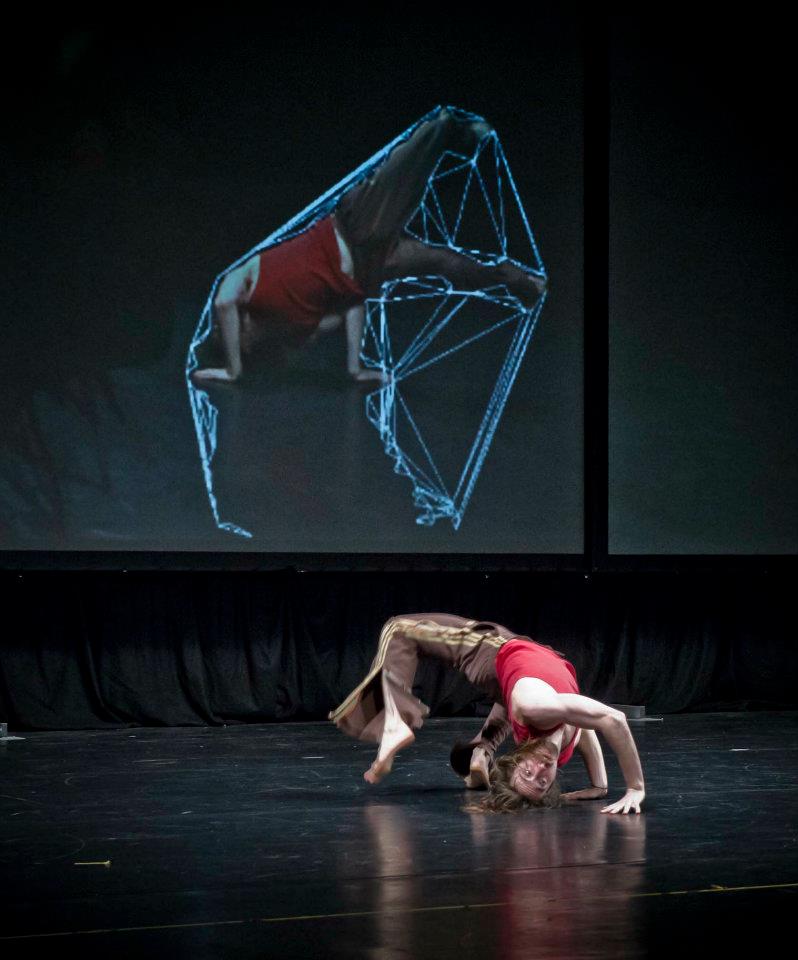 To understand the philosophy of modern dance, I read a lot of additional literature, watched videos, went to master classes. In parallel, she received a second higher education - choreography.
To understand the philosophy of modern dance, I read a lot of additional literature, watched videos, went to master classes. In parallel, she received a second higher education - choreography.
By the end of the 2009-2010 season. The number of our students has reached 200 people. We recruited children's groups, invited teachers. At the beginning of 2017, about 1000 children and adults are involved in Smart dance.
According to observations: the largest enrollments are in September (the beginning of the new academic year, the end of vacations). Growth comes from constant movement: old customers return, new ones come. The ratio is about 70/30. Inflow-outflow - 5% per month. That is, 5 customers left, about the same number of new ones came in their place.
The biggest challenge we faced was finding a place to practice. As a rule, the sites belong either to the state or to private structures, that is, at any time the lessor can terminate the contract.
Initially, we were looking for choreographic halls around the city. Called up, came, looked, talked with directors. Today, you can easily find a place to practice: fitness rooms, dance floors, and office buildings are rented out... And in 2009, it was difficult to find a suitable place. Nevertheless, the hall in the sports complex "Minsk-Arena" became the first place for classes. After they moved to the School of Gymnastics.
But I always wanted to have my own gym. It was found in the Uruchcha microdistrict, where we made repairs ourselves: we laid the floor, hung mirrors ... A year later, a branch was opened in Malinovka, even later - on Partizansky Prospekt. Now the school already has four branches in Minsk: in Vesnyanka, Malinovka, Uruchcha and on Partizansky Prospekt.
The school reached self-sufficiency in the second year. However, due to the fact that we were constantly opening new branches, everything that the school earned was spent on development.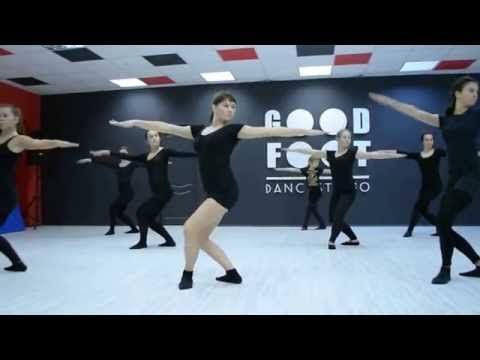
Each school has its own dance direction. There are three "big" styles in Smart dance:
- from classic to modern;
- street directions;
- fitness.
Each direction has its own teachers. The schedule is compiled based on their workload. As a rule, they work in several branches. This is done in order to give them a greater workload and thus eliminate the need to look for a second and third job. So they are completely "ours", and, in fact, that's why we have a team. We also take into account the wishes of customers: morning, afternoon and evening groups are open.
At the time of opening, we didn't know which ad would work. So we tried outdoor advertising. Subway ads worked well, but billboards didn't. But now the main advertising is “word of mouth” and leaflets, which we “pointwise” distribute to the target audience - young mothers aged 19-30 years old - on the streets of those microdistricts where branches are located.
In addition, we promote the project in social networks: Facebook and Vkontakte.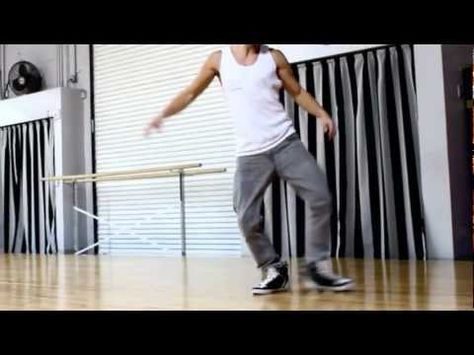 The community in Vkontakte is more efficient. We do all advertising for online groups ourselves, without the involvement of SMM-specialists. Basically it's a competition. Plus, we exchange invitations to events, news about promotions with other companies that have the same target audience.
The community in Vkontakte is more efficient. We do all advertising for online groups ourselves, without the involvement of SMM-specialists. Basically it's a competition. Plus, we exchange invitations to events, news about promotions with other companies that have the same target audience.
Today, when we are already known, the advertising budget is small.
1. The dance business is highly seasonal. In summer it is almost impossible to gather a large number of people: everyone is resting. As well as in early December-January, during the New Year holidays. But you can work with this. For example, we do summer camps for children, intensive adult programs aimed at the final result.
2. Competition. Personally, I am for competition, it encourages development. But competition in our country is not always fair: sometimes dance schools are opened by people who have not been trained in this professionally. I know many cases when a person, after studying for a year, decides to open his own school.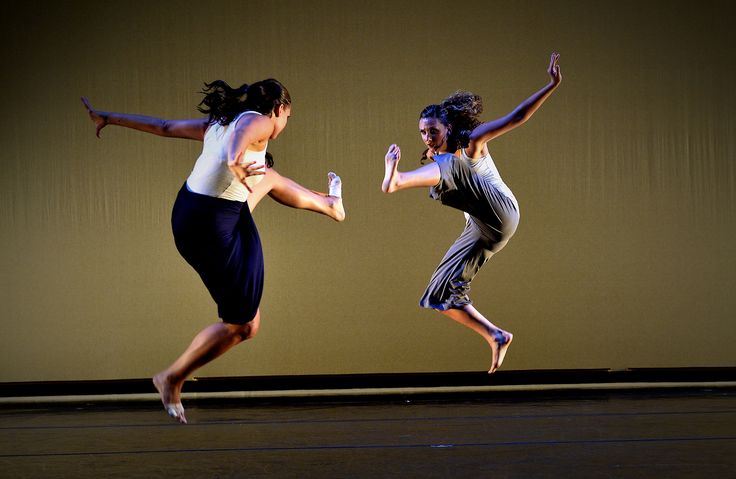 And clients do not always understand who is a good teacher. Often the choice is this: if only closer to home. Therefore, I always advise: pay attention to the experience and qualifications of teachers.
And clients do not always understand who is a good teacher. Often the choice is this: if only closer to home. Therefore, I always advise: pay attention to the experience and qualifications of teachers.
3. We try to organize events. During the year we hold three or four big events: reporting concerts in December and May, the republican competition of modern choreography "Asterisks", master classes with foreign choreographers. Not always the event goes to the "plus", because it all depends on the number of participants, spectators. Inviting foreign guests is very expensive. Recently, we have seen a certain outflow of customers: the real incomes of the population are decreasing. Although, of course, we always call and ask why the person left.
We have developed a system of discounts. There are family subscriptions, when parents bring their children and study on their own, discount programs for friends and regular customers: if a client has been studying for more than three months, he is automatically included in the number of regular ones.
We also offer express programs at a special price, which is about 25% lower than the cost of a regular subscription. This is due to the fact that the amount that needs to be paid to the client immediately is actually multiplied by 3. Not everyone can afford it, which is why we introduce discounts. Although I do not really like discounts: I prefer to improve the quality of services and offer the client more for the same money. For example, additional outdoor training, jogging with a teacher according to an agreed schedule, souvenirs and certificates at the end of the program.
An obligatory component of Smart dance is reporting concerts, where parents can see what their children have learned, assess the general level of the school and teachers. This is a good decision: after the reporting concert, the number of people wishing to sign up for training increases significantly.
In addition to directly teaching dance, I really wanted to stage full-fledged performances based on modern choreography.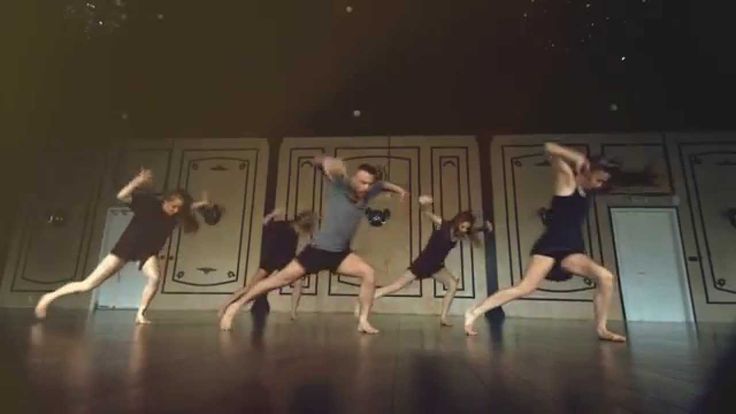 But in order to produce such performances, many additional “serving” branches are required: for example, costumes for concerts. Outsourcing them is too costly. So we opened a sewing workshop. We bought equipment, allocated premises in one of the branches, found seamstresses and now we fulfill orders not only from our own groups, but also from other dance schools. The main orders of the atelier are stage costumes.
But in order to produce such performances, many additional “serving” branches are required: for example, costumes for concerts. Outsourcing them is too costly. So we opened a sewing workshop. We bought equipment, allocated premises in one of the branches, found seamstresses and now we fulfill orders not only from our own groups, but also from other dance schools. The main orders of the atelier are stage costumes.
There are almost no orders during the summer, so from June to August we develop new models of casual wear. We sew it for designer fashion markets. The number of orders depends on the schedule of the markets themselves, which become a kind of advertising platform. Usually we sell something ready-made and distribute business cards for tailoring: it happens that the client wants the same style, but in a different color or with different embroidery, or he himself has ideas for changing the style.
In 2015 we needed scenery. This is how the art studio "Ris" and the craft workshop "Ezh" were opened, which today offer full-fledged programs for children and adults.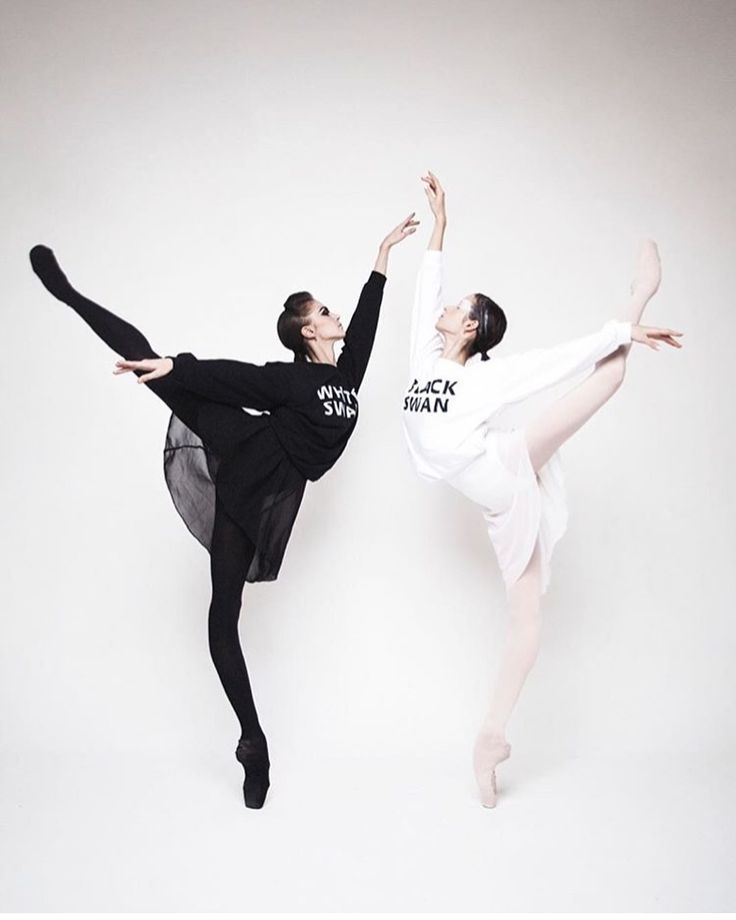 We teach anyone who wants to learn how to draw and engage in arts and crafts. Groups work in the morning and evening. The tutoring format of classes is in demand: most often groups of up to five people, but often - of two or three.
We teach anyone who wants to learn how to draw and engage in arts and crafts. Groups work in the morning and evening. The tutoring format of classes is in demand: most often groups of up to five people, but often - of two or three.
Profitability of art studio and craft workshop is still zero. The second season has begun, we are just starting to pay off.
In the third year, another niche appeared: dance training for children who want to learn dance, get professional training. A separate gymnastics school was opened last year.
Read also: I have an idea: a graduate of the Moscow Strelka decided to create a children's school of architectural thinking in Minsk
The nearest plans are to stage a modern choreography performance for children with the participation of the best students of our professional program. The performance, in fact, will be the first in the country in the genre of contemporary and jazz.
In addition, I still want to create a real school.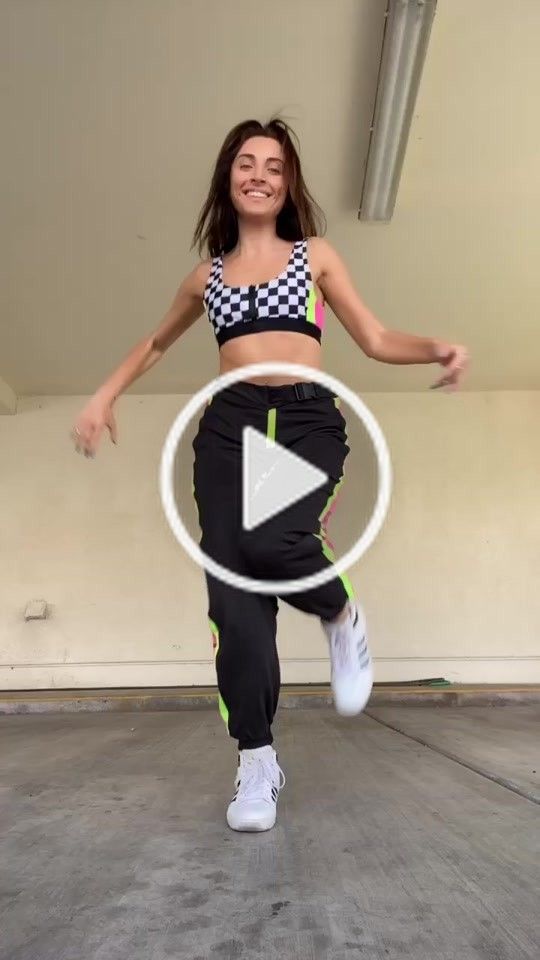




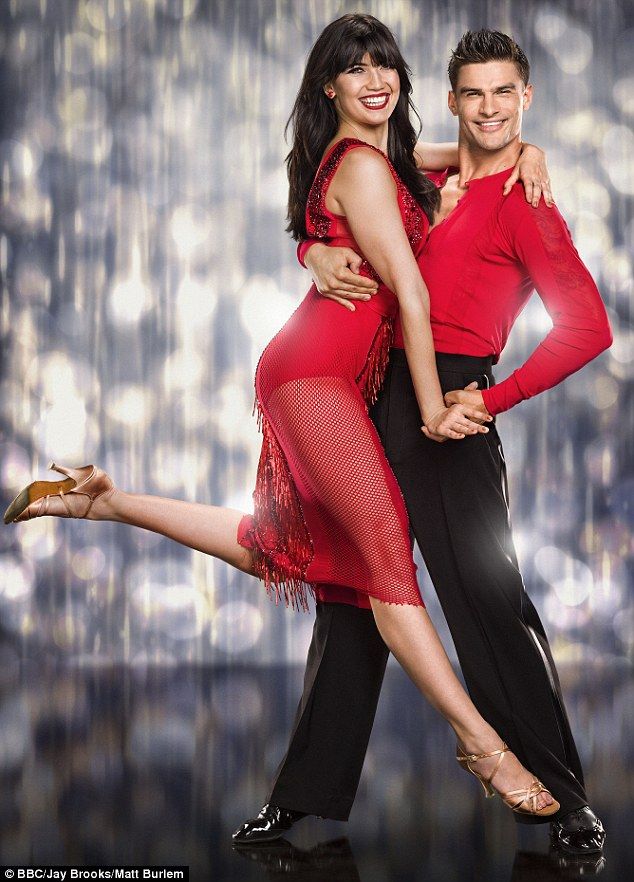


.jpg)

